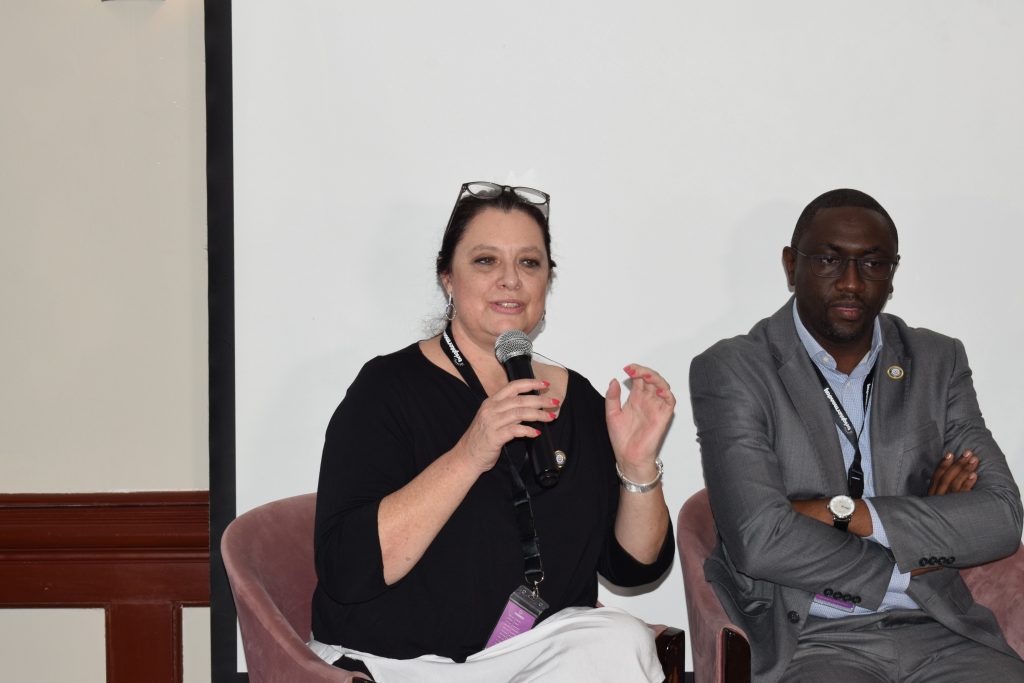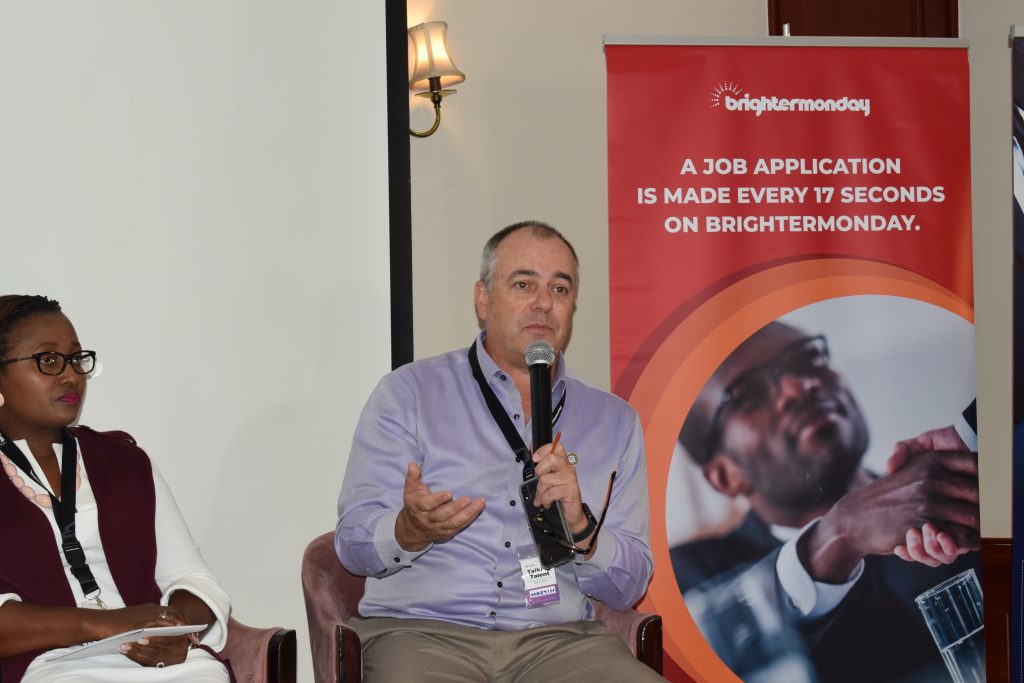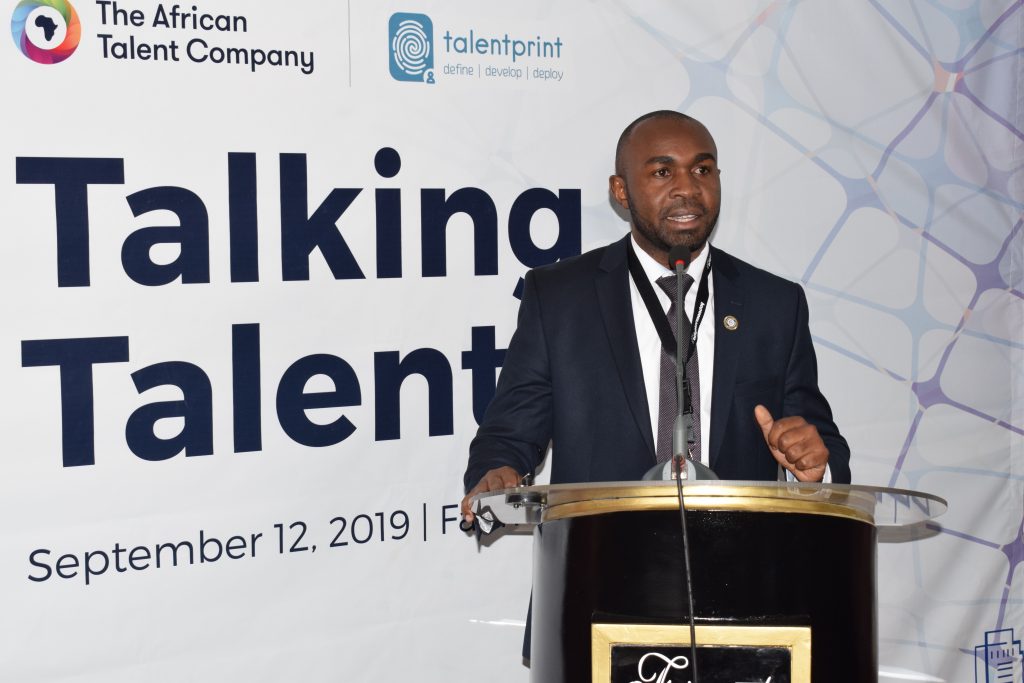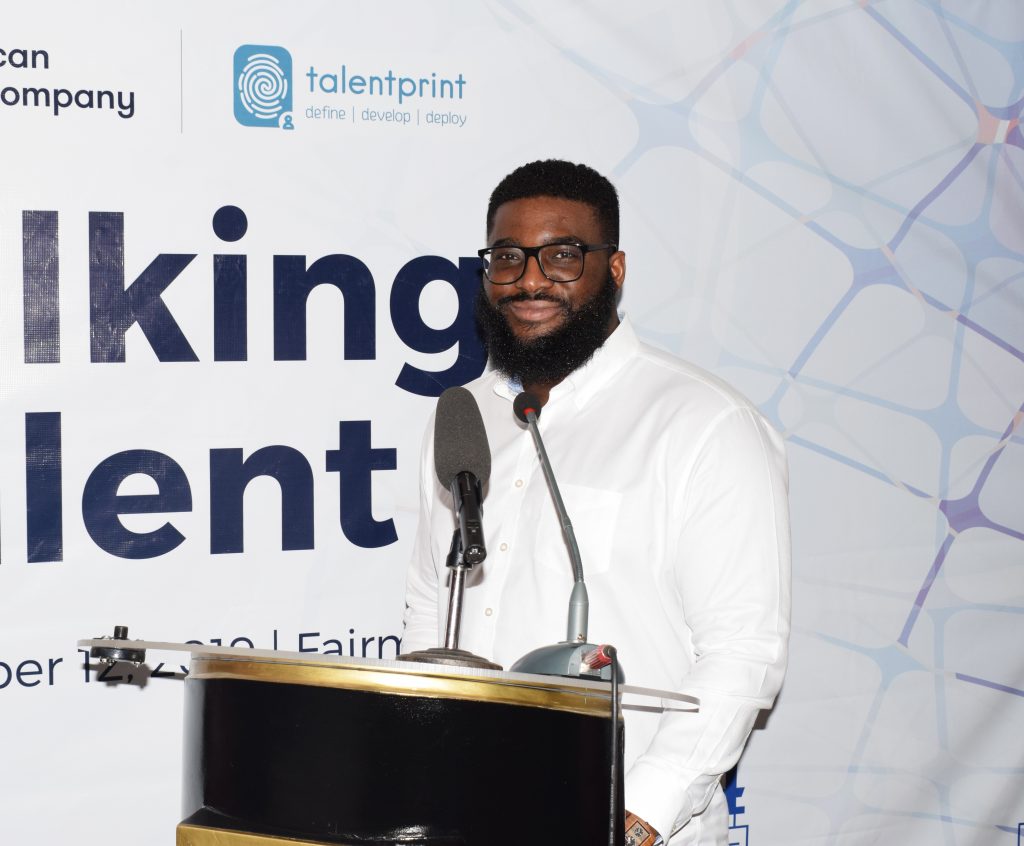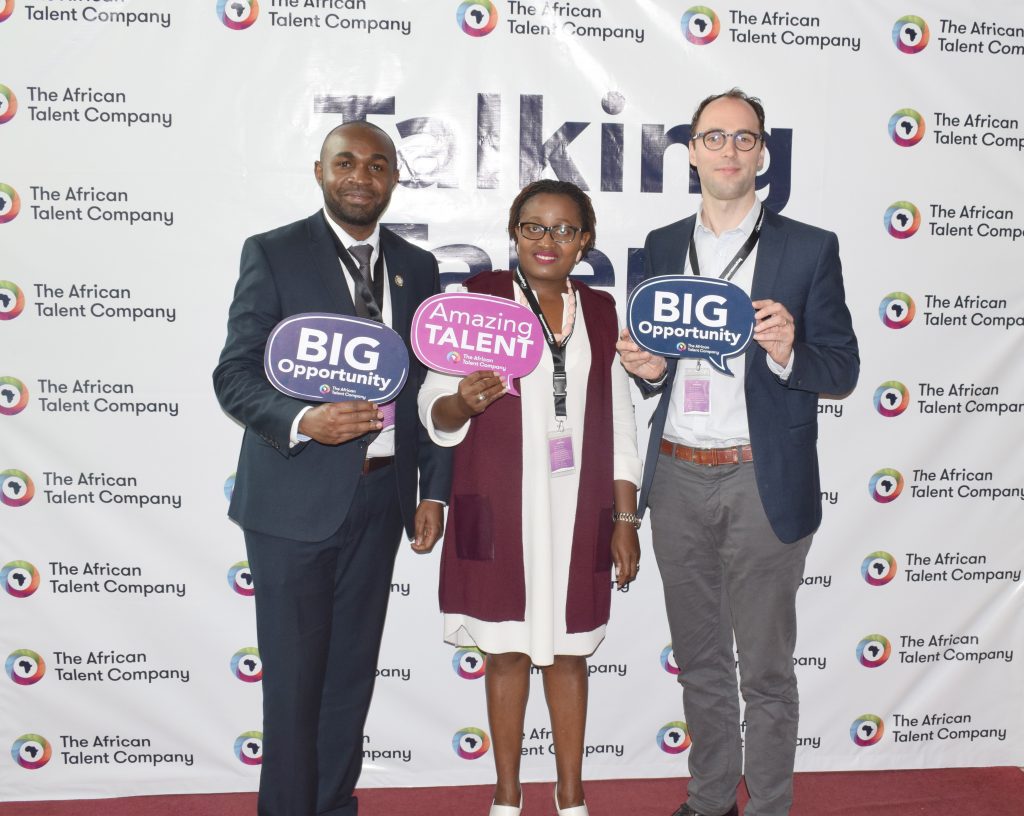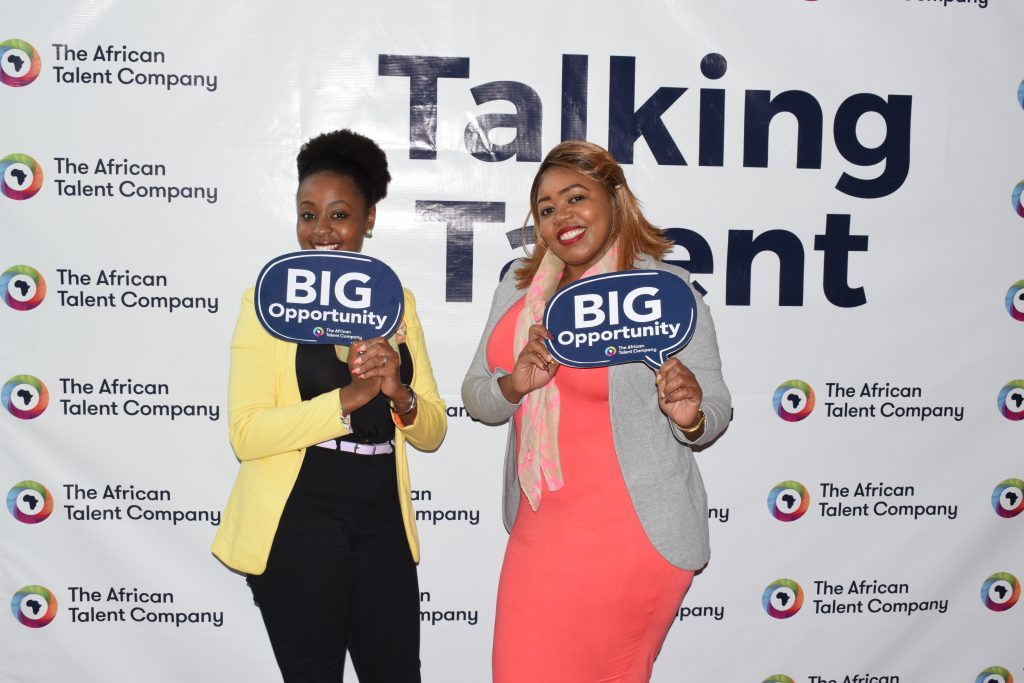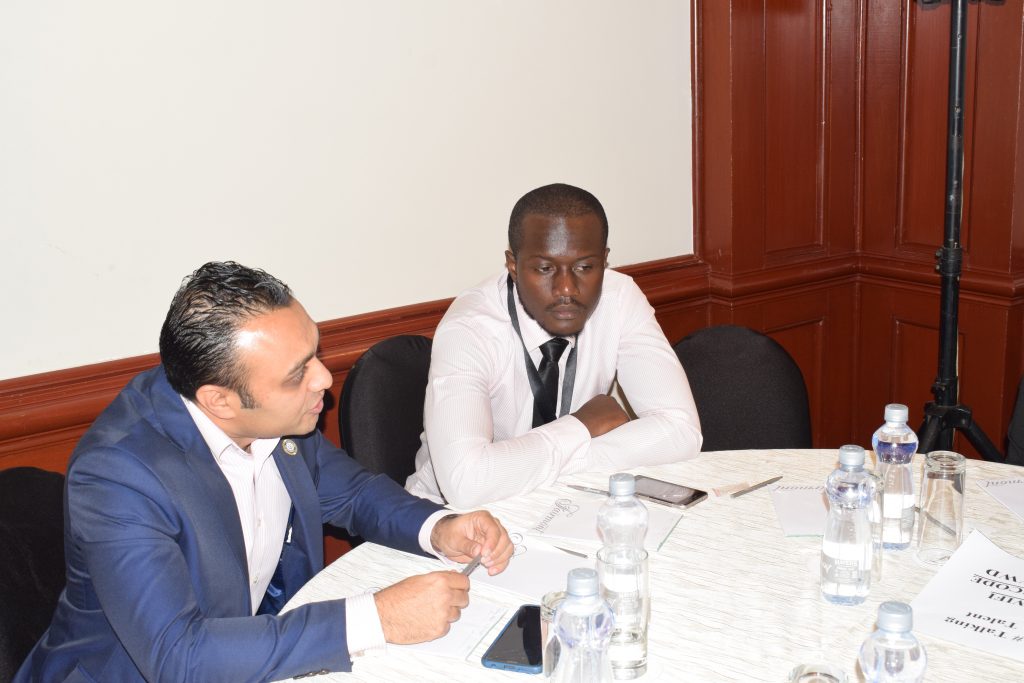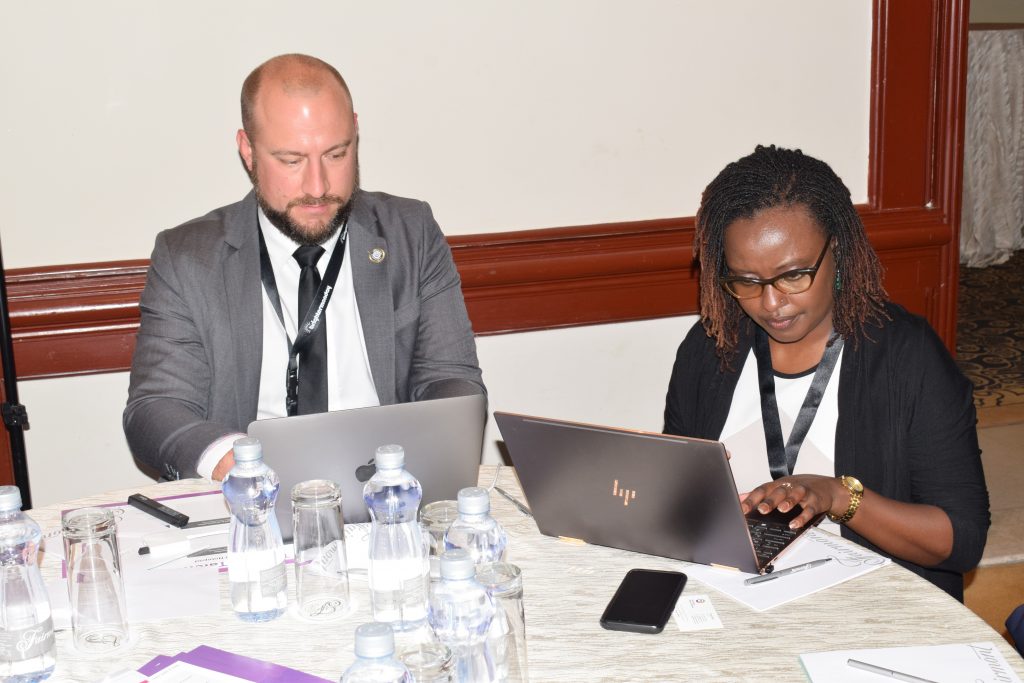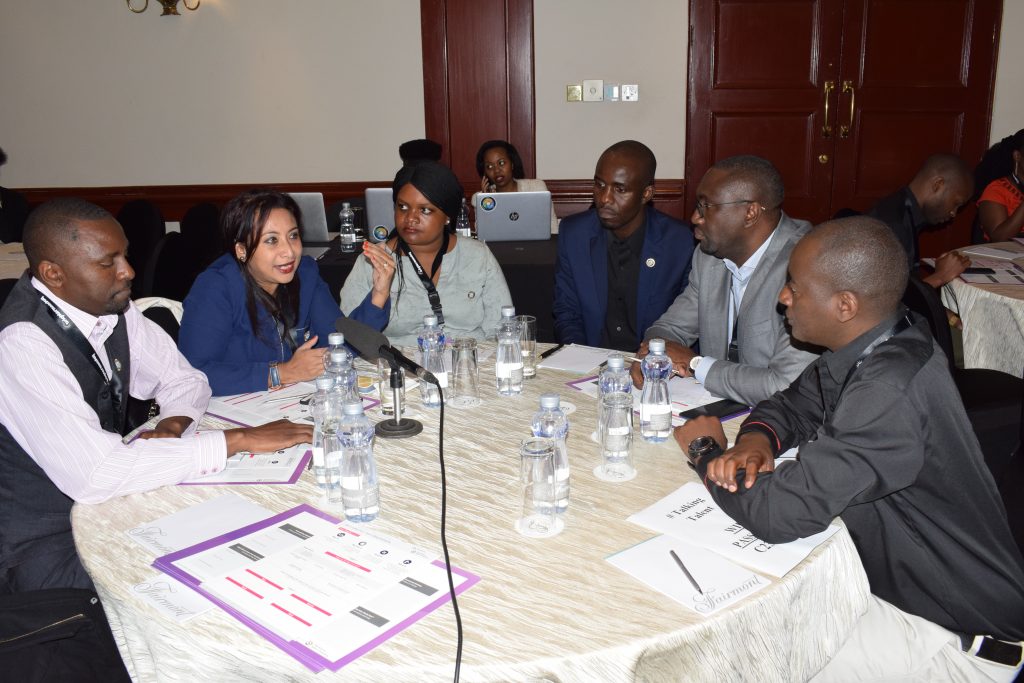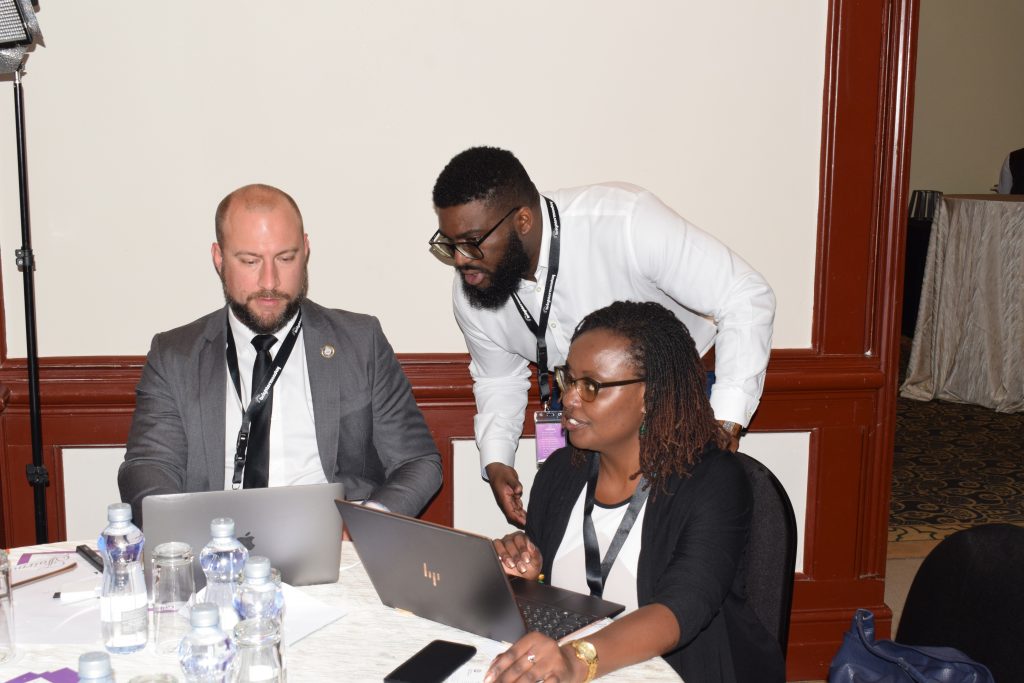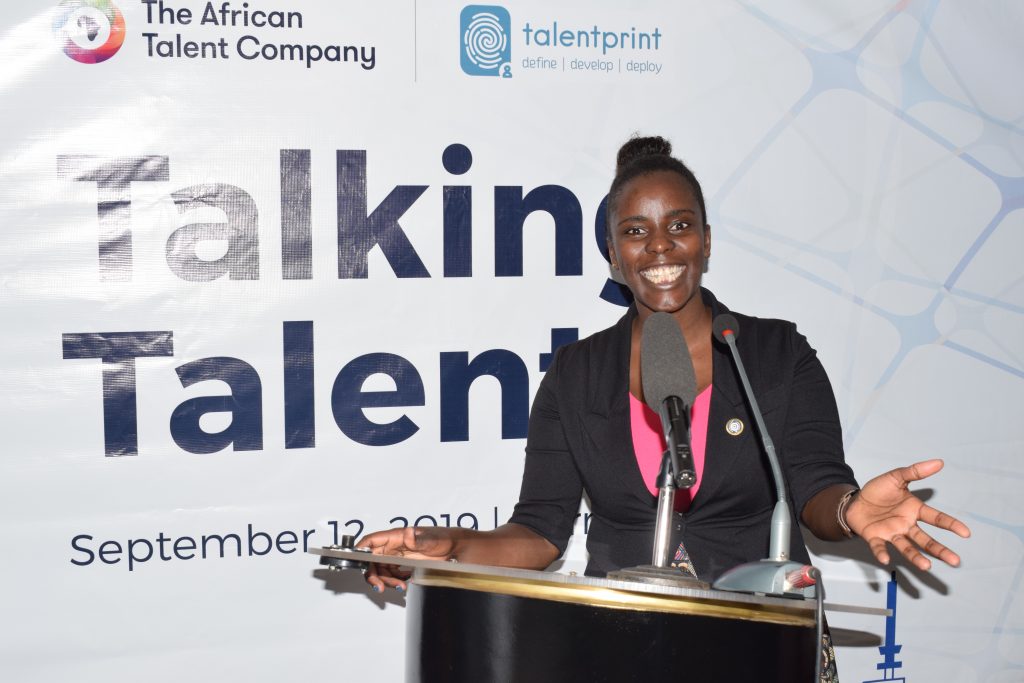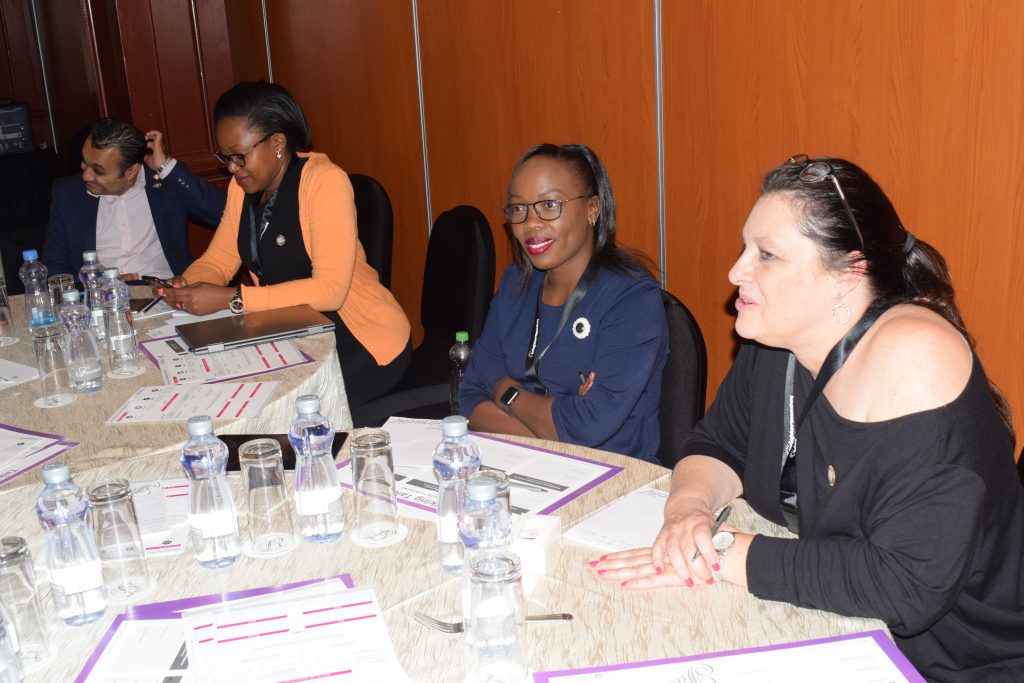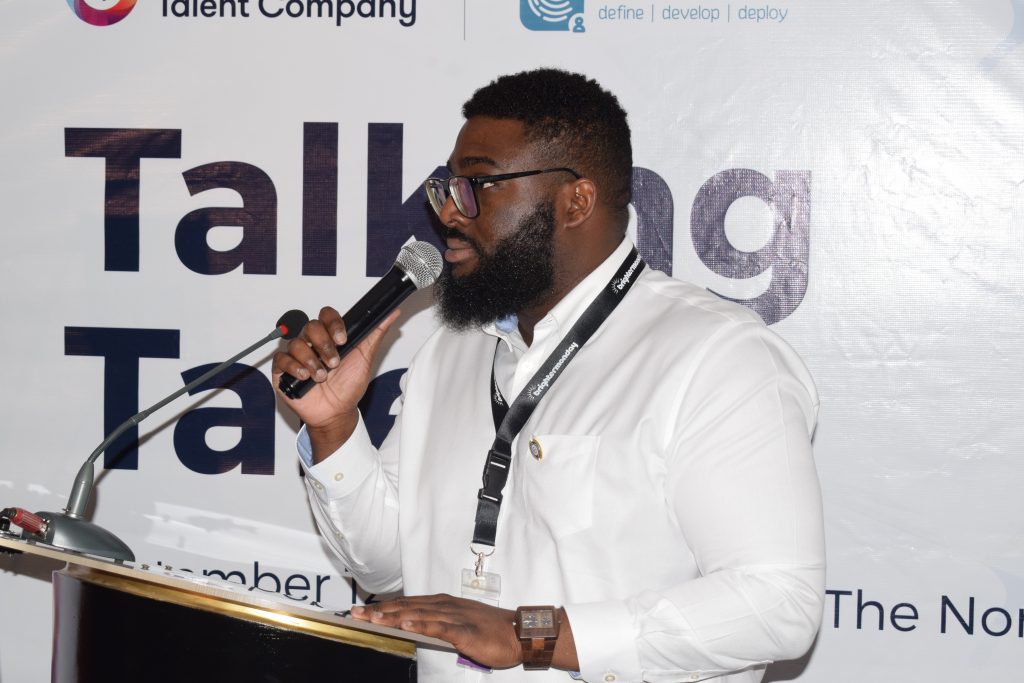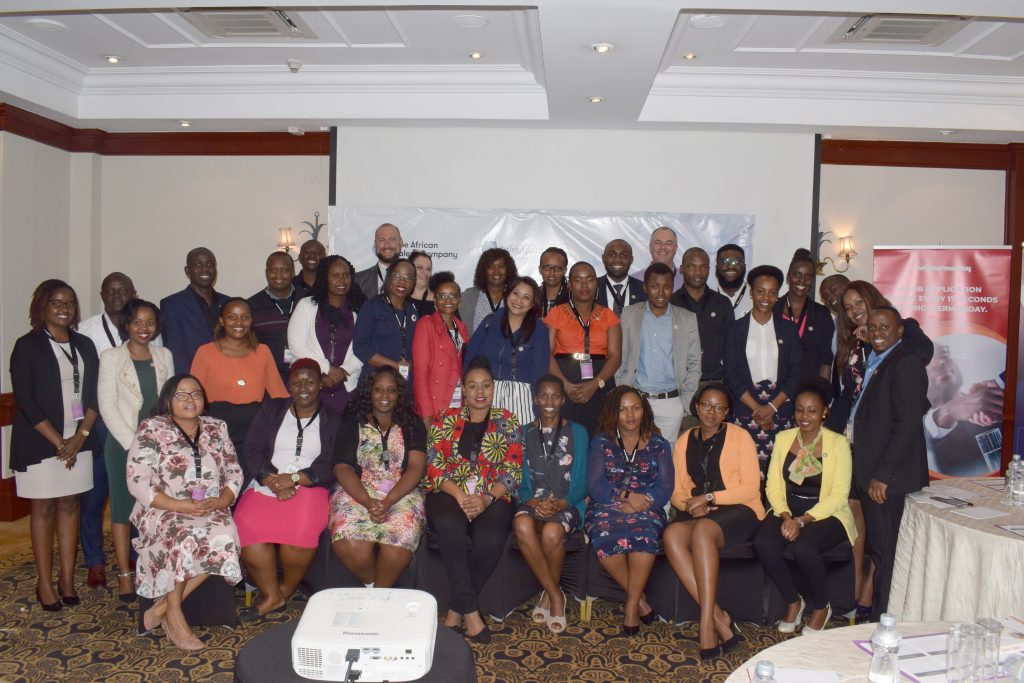Technology has played a key role in the evolution of HR. Experts say that the future of talent and career management is moving towards customization, some call it ‘Consumerization of HR’.
Category: Posts
Why Are Your Top Performers Leaving?
Losing your top performers can be a massive detriment to your company’s success. There are various reasons why your top performers are leaving; lack of recognition is one of them.
Recognition refers to the acknowledgment of employees for their exemplary performance. The objective of employee recognition in the workplace is to strengthen particular behaviours and practices that produce better performance results.
Retaining your top performing employees is essential for your company’s success hence recognising your top performers is vital, and not only does it reduce their turnover rate; but also helps you to keep them happy and engaged.
5 Ways To Recognise Your Top Performers
Understanding how to recognise your top performers can help reduce their turnover rate. When top performers feel valued for their work, their satisfaction and productivity levels are likely to increase, and in turn, this motivates them to maintain or exceed their performance.
Here are 5 ways you can apply to recognise your top performers:
Say Thank You
A simple verbal thank you goes a long way in acknowledging your top performing employees as a gesture of appreciation. Do not hesitate to say thank you to your top performers.
Public Acknowledgement
Amplify your top performers’ achievements to the rest of the organisation. Let them be seen by their colleagues. You can highlight their achievements in the company newsletter, publish a blog post on your company website or through weekly/monthly meetings. Such gestures boost motivation, they make them feel like they are seen.
Bonus Programs
Comprehensive bonus programs aimed at compensating employees who maintain or exceed their performance are a great motivation booster and they drive them to work harder when their performance is rewarded. Bonus programs can be connected to performance reviews to make them feel rewarded in proportion to their efforts and contribution.
Give Out Awards
Honour your top performers with plaques. This can be done in the form of a company award ceremony aimed at recognising top performers and their contribution to business goals.
Personalised Incentives
Speak to your top performers and find out what they would really like, ideally something within the company’s budget. Incentives tailored to their interests make it personal.
Final Thoughts On Top Performers
Recognition should be embedded in your company culture. Recognise your top performers and be deliberate about it. A workplace where recognising employees who exceed their performance is the norm is not only beneficial to top performers but also other employees as it motivates/inspires them to learn from their exemplary colleagues.
How does your organisation recognise top performers?
Talking Talent: Recruitment Professionals In Kenya Brainstorm Disruptive Approaches To Solving Pressing HR Issues And Unearth Some Interesting Trends
A wrong hire, rushed recruitment or exit of a high performing employee costs an organisation on average 3x the annual salary of that position, once all the basic costs are included in calculations. This is a terrifying expense and one of the reasons recruitment leaders have to ensure that their companies must attract the right fit and strategically plan for succession, at all levels. One pioneering HR consulting company is trailblazing the course to help Kenyan companies achieve this.
On Thursday, September 12th 2019, over 50 HR Experts and Top Business professionals gathered at The Norfolk Hotel in Nairobi, Kenya to discuss human resource management strategies that help organisations plan for the right hire, identify, develop and retain top-performing talent and position teams for a smooth succession. This event, ‘Talking Talent’, is the second edition of a series of HR workshops planned to take place across different countries in Africa and is the brainchild of The African Talent Company (TATC), a Pan-African recruitment firm offering ‘Fit-For-Purpose’ HR solutions across Talent Acquisition, HR Technology, Data Analysis, and Consultancy.

Key speaker of the day, Martin giving his presentation on how to future-proof your business
Senior HR professionals from a wide range of top companies and industries, such as Wananchi group, CBA, Kenchic, Ramco, Netfund, Karen hospital, Autoxpress and Melvin’s Tea, were in attendance as speakers, panellists, and workshop participants. There were presentations and panel discussions, however, the two key activities that struck a chord with the participants were the presentations and the break-away sessions to deep dive on three key HR pain points: ‘Hiring Right’, ‘Managing Talent’ and ‘Succession Planning’. These one-on-one sessions were respectively led by three talent Gurus: Heather O’Shea – Managing Partner, TATC; Martin Sutherland – Global Director, PeopleTree Group and Brett Mulder – COO, PeopleTree Group.
The presentations were very interactive feedback sessions, as the two presenters from the PeopleTree group had six quick disruption conversations with the audience around Personalizing Engagement; Rethinking Assessment; Talent Investment Strategies; Curating Learning Resources; People Analytics; and Data-driven succession planning. An encouraging statistic that stuck out was that succession planning is being practised at the top level in Kenyan companies although not in as many organisations as would be desirable. That implies that there is a need to encourage and grow this trend in all economic sectors to ensure that whenever high performers leave, a skills gap is not evidently felt in business operations. Brett Mulder, who led the breakout group on Succession planning, said, “data is useless unless someone starts doing something with it. Turn data into conversations, and with it create a development plan for your organisation that will encourage and drive succession planning.
Heather O’Shea, who focused on hiring right, also said, “Top companies all struggle with getting their workforce planning correct, not knowing when to ‘Buy, Borrow, Build or Bind’ the skill. This can be very costly, from a time, money and emotional perspective and we want to make it easy for HR leaders to understand how to choose the right strategy”. To facilitate this learning, participants were given a free workforce planning template and a demonstration on how to use this template at their respective companies.
During the panel discussion, chaired by BrighterMonday CEO, Emmanuel Mutuma, he mentioned, “There are behavioural traits in an individual, beyond the technical skills or qualifications listed on a CV, that can help recruiters identify top performers and high potentials. The panel was discussing ‘How to identify top performers and how to retain them’ and had panellist Martin Sutherland, highlighting that “High performers are not necessarily high potentials. High potentials can be hard to spot because high performance is so easy to observe that it clouds the less obvious behaviours and attributes that characterize high potentials, like change management or learning capabilities. A clear and strategic growth plan should be put in place to nurture, train and position for succession”.

Panel Discussion moderated by BrighterMonday CEO, Emmanuel Mutuma- middle.
In engagements with clients in 2019, TATC asked: “How do I future-proof my business to ensure I have the right skills to continue to grow well past 2020?”. This was the key pain point, and to address this, TATC decided to not hold “‘another conference”‘ but rather to have a workshop, where TATC could share insights and offer their talent specialists who could bring their expertise to share with clients. Delegates were offered the opportunity to have one-on-one sessions to speak about their challenges because TATC wanted to offer the expertise to clients in an open, yet intimate forum. The results were intriguing, as key insights around the challenges HR leaders face in succession planning and workforce planning were discovered and discussed. This is a high-impact workshop series that will occur regularly across the different markets that TATC operate. The maiden event happened in Lagos, Nigeria on the 30th of July 2019, and this second event in Nairobi was a step in the right direction, hopefully with more events in key African capital cities in the near future.
 Group breakout sessions on Hiring Right
Group breakout sessions on Hiring Right
—
Boilerplate
The African Talent Company (TATC) is a subsidiary of The Ringier One Africa Media Group, housing the biggest and most successful recruitment websites in Africa, including Jobberman in Kenya and Ghana, BrighterMonday in Kenya, Uganda and Tanzania. TATC is well-versed in understanding and solving the complex HR challenges in Africa today and takes pride in delivering the right people for the right job; thereby ensuring the clients’ growth and continued success in Africa. TATC is proudly building Africa’s businesses with Africa’s own talent and the team is spread across 6 countries and growing.
Contact: nairobi@tatcafrica.com
See pictures from the event below.
Are You Encouraging Work-Life Balance In Your Company?
Work-life balance is a crucial aspect for a healthy workplace, therefore maintaining it is great for your company’s overall well-being as it helps reduce stress and prevents burnout among employees.
Work-life balance is a term used to describe the balance that employees need between time allocated for work and other aspects of life. Aspects such as their personal life, professional life, and family life are equal without sacrificing either. Other aspects aside from professional life could be their personal interests, family and social activities.
6 Ways To Encourage Work-Life Balance In Your Company
Having a healthy meaningful well-rounded work life and personal life allows employees to balance both without interfering with each other. Employees whose life is balanced are more likely to be motivated which in turn increased productivity and employee retention hence a healthy work environment is essential for your business as well as the health and happiness of your employees.
These are some of the ways you can apply in the workplace to encourage work-life balance for your employees while ensuring that they’re performing and meeting company goals.
Flexible Working Hours
Flexible work schedules where employees are not restricted to the old-age standard hours is important for work-life balance as it fosters a better quality of life as well as mental and physical wellness which reduces unplanned and unwanted absenteeism among employees. It also allows employees to take care of their needs while achieving their work goals.
Wellness Programs
A healthy body equals a healthy mind hence a workplace made up of wellness benefits such as gym memberships, nutrition programs, free medical assessments is necessary for the well-being of employees. This in turn boosts productivity, reduces fatigue, stress and absenteeism. You could start by asking suggestions from your employees about their ideal wellness-friendly workplace and then execute accordingly.
Working Remotely
Working remotely allows employees to integrate life between work and their personal life and achieve balance in both. Remote culture allows employees to spend more time with their families and take care of their personal responsibilities while working.
Employee Development
Employee development where employees are exposed to knowledge, nurtured and guided to reach their full potential, allows them to broaden their knowledge span and sharpen their skills. Therefore, normalising learning and acquiring knowledge should be part of their work-life as it can be used for both their professional and personal growth.
Aim for the kind of learning that nourishes the mind; employee development could be done through training and workshops.
Family Support Services
Employees knowing that you care about their family’s well-being can help boost their morale. In addition, this can have a positive impact on their performance and productivity.
Family support goes beyond family responsibility leave, or maternity and paternity leave. You could incorporate features like in-house child care services for employees with children.
Company Social Activities
Scheduled company social gatherings can help boost employee morale and engagement. Social activities could be done in the form of birthday celebrations, family lunch, meeting up for drinks to allow employees to relax and recuperate and recharge while getting to know each other. They can be held at your office or outdoors, whatever works for you.
Final Thoughts On Work-Life Balance
It is imperative to note that work-life balance is not only beneficial to employees but also your company; hence should be taken seriously. Having comprehensive programs dedicated to promoting work-life balance as part of your company’s framework is a great start, followed by monitoring and evaluation of those programs on whether they’re serving their purpose.
Balanced employees are more likely to be happy, feel motivated and less stressed out at work, which in turn increases their productivity thus prioritising work-life balance among them should be part of your company strategy.
How is your company managing work-life balance? We would like to hear from you.
How To Be Headhunted As A Top Executive
Attaining your most desired job can sometimes be a tedious resultless process, especially when you don’t know how to do it right. However, there are a number of ways to increase your visibility to headhunters as a top executive; LinkedIn is one of them.
Headhunting is a form of recruitment where the recruiter finds and selects a prospective candidate with relevant experience in a particular field of expertise. This style of recruiting can be done by HR executives, or recruitment agency representatives known as headhunters.
Working with a headhunter can be beneficial because they know what the hiring company is looking for. Furthermore, they could also give pointers on important factors such as tips for a successful interview, salary negotiation etc.
5 Tips To Get Yourself On A Headhunter’s Radar
Knowing what to do to get headhunted can maximise your chances of getting your most desired dream job as a top executive. Here are a few tips to help you become one of the top echelon of candidates, who headhunters alert when job opportunities arise.
Update Your LinkedIn Profile
It is important to ensure that your LinkedIn profile is up to date. The more information headhunters have at their disposal about you, the better the chances of them finding you. It also helps the headhunter to understand your career history and how to position you to the hiring company.
Have a Presentable Profile
Your LinkedIn profile should not only be up to date but also presentable. How you present your information is key, and can be used either in your favour or against you.
Your profile speaks volumes about you, hence how you present it is very important as it can determine whether the headhunter will contact you or not. If you can’t put together a presentable profile imagine what the headhunter will think about your work and overall competence?
Have an Attention Grabbing Profile
Your LinkedIn profile should be an attention grabber with keywords related to the kind of job you’re looking for. Use it to amplify your achievements and experiences.
Include Your Contact Details
Providing contact details like your email address or cell phone is crucial. If the recruiter calls and not get a hold of you, they will try other communication channels such as WhatsApp. If you receive a WhatsApp message from them requesting a discussion, be open to the discussion.
Be Open to the Discussion
When a headhunter reaches out to you, they could suggest an informal discussion to talk to you when it’s convenient, always be open to the job opportunity they’re offering. The role they’re discussing might not be what you want at the time but meeting with them can be beneficial – they could advise on other available opportunities of your interest. Don’t be quick to say no. First have a conversation before you write it off and after that you can weigh your options.
Final Thoughts On Being Headhunted As A Top Executive
The headhunter’s mission is to match specific top talent with very particular top job openings; hence through preparation is essential. How you position yourself plays a vital role in determining whether you will be headhunted as a top executive.
Have you been headhunted before? What did you do to get yourself noticed by headhunters?
Top Leadership Traits Of Best-Performing Executives
Identifying the top leadership traits of your best-performing executives is imperative because unlocking and leveraging their leadership potential can be beneficial for both organisational and personal growth.
Leadership refers to the ability of an individual or an organisation to lead, guide and offer direction to others. Others in this regard could be individuals or groups of people or even entire organisations.
In every organisation, there are employees who do their work exceptionally. This could be a result of various factors – leadership traits are one of them. The leadership traits are a balance of not only business acumen and performance but also a combination of character.
Top Leadership Traits Of Best Performing Executives
Ever wondered why your best-performing executives excel at what they do? How they do it and what drives them to? Let us explore the top leadership traits that could the reason why.
Courage
They are courageous and this trait propels them to be proactive and take the lead in what they do, which makes them action-oriented. Even when challenges arise, they have the drive to face them; they thrive in challenging times.
Accountability
They take accountability for their actions, decisions, and performance among others because leaders own up to their responsibilities than avoiding them. They understand the essence of working with others and the shared responsibility that comes with it.
Communication
Communication plays an integral part in leadership. Communicating well with others is a great skill that allows your best-performing executives to understand the status quo within the work environment and how to strategise and achieve desired goals.
Collaborative
They understand no man is an island and that teamwork makes the dream work, hence are good at cooperating with others and working together to achieve and exceed desired results.
Aligned
They understand the direction the company wants to take and how they intend on achieving them as well as being aligned with the company’s mission and vision. Understanding this, they are driven to actively contribute and bring the desired outcome to life as they are interested in the team and the organisation’s agenda. Being aligned enables them to support their team.
Visionary
A leader who is a visionary sees beyond the now and is more focused on seeing into the future, this enables them to be great at strategic planning and forecasting because they are ahead in their thinking.
Trustworthy
Trust is a crucial leadership trait and leaders should know that their word is their honour. Being consistent with their actions and words while listening to others develops a trustworthy environment where their teammates know they can rely on them.
Humility
Serving others is one of the leadership responsibilities; leaders are approachable and respectful towards their teammates irrespective of job level.
Final Thoughts On Top Leadership Traits
Remain eagle-eyed and observant of your best performers’ behaviour and then identify those traits, develop, nurture and use those skills to better your executives. You could start with a behavioural tracking mechanism where you monitor their leadership traits; a leadership potential watch so that when training and developing them, you know which areas to focus on.
What mechanisms are you using to spot top leadership traits of your best-performing executives?
It’s Your First Job Ever! Congratulations – What You Should Know
Your first job is your entry into the professional world and there are things you should know before you settle in. The more information you have at your disposal, the better because it enables you to navigate the work environment with ease.
Transcending from college life into the professional world/real world can be tricky if you’re not armed with enough information that’s why you need to take note of certain factors upon securing your first job ever.
What You Should Know Once You Get Your First Job Ever
Here are 9 important things that you need to know when entering into the work environment for the first time.
Dress Code
Most companies have a standard dress code policy, you should follow that and always look fresh and presentable – starting from your first day at work, make sure you dress as professionally as possible. Avoid wearing casual attire that does not adhere to the said policy.
Time Keeping
Companies operate on working hours and you need to respect that. Check in your offer letter to make sure of the time you are supposed to report for work in the morning and if you are not sure, ask.
Check how long it will take you to get to the office before you start work. Make sure you leave early enough so that you are not late. From there, you will know what time you can leave home to be on time.
Your Salary
Your salary is your business. In most organisations, it is deemed unacceptable to discuss it with others in the office. Salaries are usually paid monthly unless otherwise specified and normally paid anytime from the 25th to the end of the month. If you don’t have a bank account you will need one. Ensure that you have opened a bank account before joining the organisation – or payment of your salary will be delayed. Salaries have deductions such as taxes etc. If you are not sure what the deductions are, request your payslip, which will give you a detailed breakdown of what the deductions are.
Company Process
Companies have processes, if you are not feeling well to go to work, you need to call your supervisor and let them know. If you are off work for 2 days or more, you will need to produce a doctor’s note and if you want to take leave – you need to apply for it – this may need to be done by filling in a form, or by applying for leave on a system.
Office Equipment
If you use equipment such as the company laptop, ask if you are allowed to take it home. This is company property and must be looked after.
Emails
Emails in the office must only be sent to people either within the organisation or customers or people you are doing business with outside of the company. Find out what your company’s IT policies are and adhere to them. Email Etiquette is also key: always start your email off in a business manner, always use your spell check. You cannot use slang, or spell like you would when chatting to your friends.
Using The Internet
It is imperative to be aware of the company’s internet use policy. In most companies, employees are prohibited from using social media platforms such as Facebook and YouTube during working hours, thus spending time on social media will get you into trouble.
Your Phone At Work
Phones can be a distraction so your phone should be put away during working hours. If you receive personal calls – rather call them back during your lunch hour. The same applies to spending time on Facebook on your phone during working hours; it is not a smart move.
Confidentiality
The information you are exposed to at work must remain confidential. You are now seen as an ambassador of the brand wherever you go. Be proud of where you work.
Final Thoughts On What You Should Know About Your First Job Ever
Ask! Ask! Always remember, smart people ask; that’s how they learn. Don’t hesitate to ask if you’re unsure about anything in your new professional environment. Stay observant and keep learning as much as possible.
What did you do in preparation for your first job ever?
Strategic Planning To Change Your Career
Strategic planning to change your career is key to long-term success and growth. There comes a time when you yearn for a career change as a result of a number of underlying reasons, however, you need to have a strategic approach if you want to do it right. Having a solid career plan in place will help you get closer to your career dreams.
Strategic planning to change your career is the process of defining the direction, strategy and then making decisions on allocating resources such as time to pursue that strategy. It entails the what, the how and the why of what you intend to do and get out of the plan and once you decide, you embark on implementing and executing accordingly.
4 Strategic Planning Steps In Changing Your Career
Do you feel stagnant in your current career? Like you have exhausted all the opportunities and in search of new challenges and better opportunities? If you’re thinking of changing your career but unclear about how to start, there are strategic planning ways to go about it. Here are some strategic planning steps you need to consider before changing your career.
Assess and Analyse Yourself
Assess yourself before embarking on changing your career. Ask yourself what, how and why you want a career change and then decide how to go about it. It is important to understand the root cause of your career change, that way, you can apply tailor-made measures. Self-assessment is key; starting with your career path to present – from your work history, interests, skills, passions, pet peeves, and your ideal work environment. Note what you would you like in your new career, salary, analyse your lifestyle and if you need to leave your industry or relocate to a new country or city. All these matters should be considered.
Identify Preferred Career Options
Once you have thoroughly assessed and analysed yourself, identify your preferred career options. Create a checklist and decide whether you intend on staying in the same industry and profession or not before embarking on the research process.
Research Extensively
After assessing yourself and you have identified your career options, research extensively before making final decisions. Your research could be about the industry, skills, and qualifications required for your identified career choices, etc. Once you have gathered the relevant information, decide on how you are going to use the information from your research to materialise your goals – set goals which could range from long-term to medium and short-term and how to execute them.
Evaluate and Execute Accordingly
Evaluate all the above-mentioned factors to ensure they’re aligned with your preferred career options, interests, salary expectations, skills, etc and use the findings from your research to execute the most suitable decision then compare and contrast what works and what doesn’t. This could mean you need to up-skill and acquire new skills or revise your resume, whatever the case may be.
Final Thoughts On Strategic Planning To Change Your Career
Strategic planning to change your career is not something you do as a quick fix; it is an intense task that requires numerous resources in the form of time, information, research, etc to get it right. If you don’t plan; you plan to fail hence arming yourself with thorough information through research before making career changing decisions is crucial because the more informed you are, the better-informed decisions you’re likely to make to achieve your career goals.
What strategic planning steps have you taken to change your career? Share with us in the comment section.
Acquiring Talent And Your Company Brand
Attracting and hiring the right candidates is important for not only your company’s growth, but also your brand image; how you manage interviews and your overall hiring process can affect your companies brand image. Prospective candidates will most probably use it to judge factors like your company culture, gauge if you truly uphold what your brand stands for etc, and then ultimately decide whether to join your company or not – they could also go as far as discouraging other candidates.
In the current digital age, not to mention, the ever so competitive market, every stage of the interview matters; you cannot afford to be unprofessional – that’s why making your hiring process pleasant to the candidate is crucial.
Remember, Candidates Are Consumers.
When looking at hiring external staff into your organisation, it is important to remember that people research like consumers, because in fact, that is what they are. Your meeting with the candidate may not result into a successful interview but they could be consumers of your product so make the hiring experience positive.
During your interview process, many candidates will remember the recruitment experience (a representation of your brand) – always remember that you, the management of your organisation are representing this brand and can influence the way they will speak about your brand forever.
A Bad Interview Doesn’t Stop There
Lack of feedback after an interview is one of the biggest challenges that candidates face. Sending them an email or letter thanking them for their application goes a long way in ensuring that your brand is acknowledged and respected
Similarly, a bad interview experience can leave you with a terrible reputation, which in turn affects factors like customer loyalty and satisfaction. Many of us have had bad interview experiences – in reality, we don’t remember the interviewer’s name, but we never forget the brand – which stays with us for life.
Avoiding a bad interview experience is in your best interest. Whether you hire the person or not, you should aim to leave the candidate in awe about your organisation; they will undoubtedly share their experience through word of mouth.
Final Thoughts On Acquiring Talent And Your Company Brand
Upholding your company brand image should not only be left to the marketing and public relations team; it should be every employee’s responsibility, hence, communicating what you stand for with your employees is important. It takes years to build a brand and mere seconds to damage it – the interviewee’s impression counts. Ensure that your hiring process does not tarnish your company’s image.
How do you ensure that you uphold your company’s brand image during the interview/hiring process? Share with us in the comment section below.
Are You Providing Feedback To Unsuccessful Candidates?
Providing feedback to unsuccessful candidates can be challenging due to factors such as time and dreading to be the bearer of bad news, however, it is remarkably important for not only the candidates but also your organisation’s brand and reputation.
Feedback is the process of conveying information about a person’s performance so they can use it for improvement. It can be done in the form of an email or telephonically. Feedback can be positive, negative or both.
The interview process can be a thrilling experience for candidates due to the amount of preparation they have to go through and the time they invest to avail themselves for job opportunities in order to fulfil their career advancements; however, this still doesn’t guarantee them a successful outcome.
Why Candidates Appreciate Feedback
The issue of feedback to unsuccessful candidates remains a big problem that leaves many prospective candidates disappointed.
Apart from value for their time and preparation invested in the interview process; candidates also appreciate feedback because they want to know why they were unsuccessful and understand how to improve as the information could be useful for their next interview or better yet, their overall personal life.
How To Give Feedback To Unsuccessful Candidates Effectively
Despite the value of feedback, most companies either do not give feedback to unsuccessful candidates after interviewing them or those who do, don’t execute it effectively.
Granted you may receive hundreds of applications for one single role – which means, from a company perspective, you have had to also spend time going through each CV, shortlisting them, then interviewing them, making an offer, and you have achieved your goal, as an organisation, and hired the right person for the role but the candidates who took the time to apply need to be acknowledged too for the time that it has taken for them to apply and take an interest in your organisation.
As an HR professional, giving feedback to unsuccessful candidates is the least you could do. You should also remember that candidates are interviewing you too. Let us explore how you can give feedback to unsuccessful candidates effectively.
- Feedback should be constructive and specific. Something they can use to better themselves.
- Feedback should be aligned with the job description. Linking the two helps candidates understand where they can improve in the particular role.
- Be transparent about your hiring process by ensuring open communication channels.
- Be clear and honest. Give positive feedback followed by negative and wrap up with positive. It is important to close off with something positive. For example, you could advise them if the need arises for new talent, you will let them know of any openings in the future.
- Be objective. Ensure feedback is balanced and non-discriminatory.
- Provide feedback as soon as possible to avoid candidates from waiting, it shows you value their time.
- Be genuine. Ask feedback from candidates too. It shows you value their views despite the outcome of their interview.
Final Thoughts On Providing Feedback To Unsuccessful Candidates
Feedback is vital and ought to be taken seriously. It should be incorporated into your talent acquisition strategy regardless of the candidate’s position/job level or the outcome of the interview – positive or negative. Whatever your feedback entails; do it gracefully and avoid burning bridges because as mentioned above, candidates are interviewing you too. Their opinion about you can hurt your brand and reputation thus make the interview process experience worthwhile. And remember, feedback goes beyond proof of what impact it will have on your company’s image – it’s the least you can do for candidates; acknowledge their effort.
Do you provide feedback to unsuccessful candidates, if so or not, why? Let us know in the comment section.




